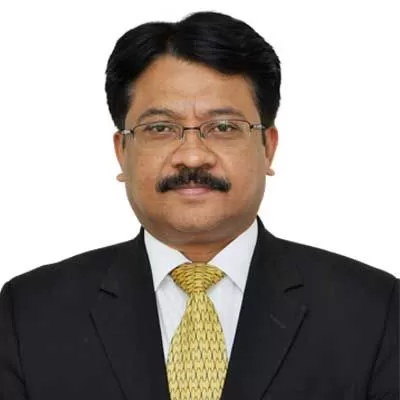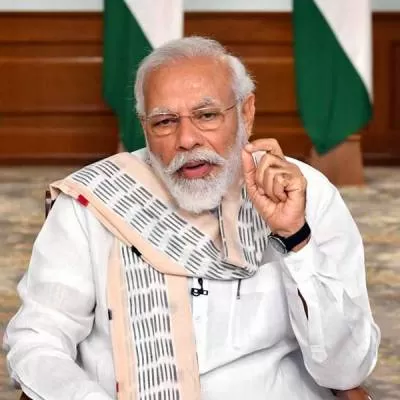- Home
- Infrastructure Urban
- ECONOMY & POLICY
- Tier-II cities are definitely the hotspots for hospitality development

Tier-II cities are definitely the hotspots for hospitality development
One of India´s largest and most respected conglomerates in the development and construction of residential and commercial buildings, villas, condominiums, business parks and hotels, Arun Muchhala Group has been a pioneer in extending the boundaries of Mumbai. The Group made its foray in the hospitality sector by launching The Byke Suraj Plaza, a new luxury hotel spread over 150,000 sq ft. Akshita Gandhi Muchhala, Managing Director-Hospitality, Arun Muchhala Group, speaks to CW on the group´s plans to penetrate the premier economy segment with this project, and more...
Please share your insight on the current hospitality market scenario.
We believe hospitality is definitely an emerging and booming market; demand is definitely larger than supply right now. The Byke Suraj Plaza project is in Thane; it is a budding IT hub with an influx of foreigners because of work. Also, there are more consumers with more disposable income who want access to more luxurious properties. In Tier-II cities, compared to Tier-I cities, there is a bigger demand for luxury because it is still a developing and emerging market; hence there its definitely more potential and opportunities.
How has the approach of Indian developers towards the hospitality sector changed over the years?
We are seeing more international brands coming to India that we had not seen in the past. We have more people who want to invest in this sector. As a developer, we see a lot of growth opportunities.
We believe the service industry has also changed; it has become more consumer-oriented. It´s not just about creating something because you want to create it, but rather to take a step ahead and create something to cater to your consumer. Our approach has changed from that aspect. There is more demand than before, which we have to take in our stride.
A report suggests the Indian hotel industry will touch the $1.8-billion mark by 2016. Thus, was it a conscious decision to launch The Byke Suraj Plaza, and why?
Yes, it is a good time to launch this project because a lot of people are betting on India right now. With the conception of this project, we planned to create an iconic property; we did not want to cut any corners. We wanted to take our time but ensure that the market is pitched up.
As a developer, at what do you limit your per key cost of development and what is the rate of return?
Our per key for The Byke Suraj Plaza was between Rs 3 lakh to Rs 5 lakh and our rate of return is about 5-6 per cent per annum; the property has a 15 per cent appreciation per annum. In a luxury hotel, the spending is usually about Rs 10-15 lakh per key.
How do you plan the design of your projects and at what stage do the architects, project managers and interior designers get involved?
They are involved from conception to completion. We ensure a lot of emphasis on design as well. In this project, we have created about 3 m additional space from the structure and have given it a Roman look externally; on the inside, it is modern and contemporary with state-of-the-art amenities. We have created an aspirational design, something that is extravagant yet affordable, and our team was a part of it throughout.
Do you undertake a study to determine locations for your projects?
Absolutely. Before we buy land or finalise a location, we have studies done by Cushman & Wakefield or Ernst & Young. They give us an entire market analysis and feasibility report, based on which we take it ahead.
Is the rate of occupancy set to increase and what are the factors behind it?
It will definitely increase. Also, because of population growth, it is turning out to be an emerging market. With the new government coming in and the market doing well in terms of tourism, there are new business opportunities. And because everything is working in India´s favour at the moment, there will be a rise in tourism. Also, with disposable income growing, we will always have demand for luxury and see growth in terms of occupancy.
Please share some trends on budget hotels in comparison to luxury hotels.
Facilities will be different.When we ventured into this project, we spoke to a lot of operators internationally, and the way they started to differentiate between the two is small things like the kind of facilities available in the room - as small as an iron and an iron stand. Something that small can make much difference. We started understanding that differentiation when we started building this hotel.
Tier-II cities need to see more luxury hotels. With more disposable income and with the cities still developing, there is potential for growth and building luxurious hotels. Meanwhile, in Tier-I cities, luxury is already present with international brands and five-stars, so budget hotels should be considered. Having said that, growth and demand undoubtedly lie in luxury hotels.
How will the smart cities initiative serve as a boom to the sector?
We have been speaking to people involved in the smart city projects. The initiative will serve as a boom to the hospitality sector, because the whole structure or model of a smart city, is like a mini special economic zone. With smart cities, you have advancement in terms of technology, a need to create better infrastructure, better connectivity, roads, public transportation that is state-of-the-art, that´s quick and easy, to create a better city for the people to live in. The smart cities structure will attract more people, whether it is for work or holidays. I believe that will help the hospitality sector.
Tell us about any challenges you have faced.
From a construction point of view, the biggest challenge is to get the work done. Being a woman, it took me at least seven to eight months to get people to listen to me. Women in the field are usually architects or interior designers; no one really goes to site. So that was a challenge.
What has been the group's investment in this project and what are your expansion plans? Also, please share your growth strategy.
We roughly invested about Rs 500 crore in this property. In terms of expansion, we have two projects in the pipeline: In Lonavala, we are coming up with a big spa, a resort, and in Baroda, we are looking at building a hotel. The group has land banks purchased through market study; this is the strategy we follow to move ahead.
For hospitality developments, which areas are the hotspots in India? And what is your outlook on the future of the sector?
Tier-II cities are definitely the hotspots. The future is bright and we are optimistic. The markets have opened up a lot more and there is definitely potential for a lot of growth. By 2022, I see it booming. I know a lot of investors, even internationally, who are looking to invest in this sector and I am hoping to see a lot of international brands creating what we see in a Dubai or a Singapore.
- Akshita Gandhi Muchhala, Managing Director- Hospitality, Arun Muchhala Group One of India´s largest and most respected conglomerates in the development and construction of residential and commercial buildings, villas, condominiums, business parks and hotels, Arun Muchhala Group has been a pioneer in extending the boundaries of Mumbai. The Group made its foray in the hospitality sector by launching The Byke Suraj Plaza, a new luxury hotel spread over 150,000 sq ft. Akshita Gandhi Muchhala, Managing Director-Hospitality, Arun Muchhala Group, speaks to CW on the group´s plans to penetrate the premier economy segment with this project, and more... Please share your insight on the current hospitality market scenario. We believe hospitality is definitely an emerging and booming market; demand is definitely larger than supply right now. The Byke Suraj Plaza project is in Thane; it is a budding IT hub with an influx of foreigners because of work. Also, there are more consumers with more disposable income who want access to more luxurious properties. In Tier-II cities, compared to Tier-I cities, there is a bigger demand for luxury because it is still a developing and emerging market; hence there its definitely more potential and opportunities. How has the approach of Indian developers towards the hospitality sector changed over the years? We are seeing more international brands coming to India that we had not seen in the past. We have more people who want to invest in this sector. As a developer, we see a lot of growth opportunities. We believe the service industry has also changed; it has become more consumer-oriented. It´s not just about creating something because you want to create it, but rather to take a step ahead and create something to cater to your consumer. Our approach has changed from that aspect. There is more demand than before, which we have to take in our stride. A report suggests the Indian hotel industry will touch the $1.8-billion mark by 2016. Thus, was it a conscious decision to launch The Byke Suraj Plaza, and why? Yes, it is a good time to launch this project because a lot of people are betting on India right now. With the conception of this project, we planned to create an iconic property; we did not want to cut any corners. We wanted to take our time but ensure that the market is pitched up. As a developer, at what do you limit your per key cost of development and what is the rate of return? Our per key for The Byke Suraj Plaza was between Rs 3 lakh to Rs 5 lakh and our rate of return is about 5-6 per cent per annum; the property has a 15 per cent appreciation per annum. In a luxury hotel, the spending is usually about Rs 10-15 lakh per key. How do you plan the design of your projects and at what stage do the architects, project managers and interior designers get involved? They are involved from conception to completion. We ensure a lot of emphasis on design as well. In this project, we have created about 3 m additional space from the structure and have given it a Roman look externally; on the inside, it is modern and contemporary with state-of-the-art amenities. We have created an aspirational design, something that is extravagant yet affordable, and our team was a part of it throughout. Do you undertake a study to determine locations for your projects? Absolutely. Before we buy land or finalise a location, we have studies done by Cushman & Wakefield or Ernst & Young. They give us an entire market analysis and feasibility report, based on which we take it ahead. Is the rate of occupancy set to increase and what are the factors behind it? It will definitely increase. Also, because of population growth, it is turning out to be an emerging market. With the new government coming in and the market doing well in terms of tourism, there are new business opportunities. And because everything is working in India´s favour at the moment, there will be a rise in tourism. Also, with disposable income growing, we will always have demand for luxury and see growth in terms of occupancy. Please share some trends on budget hotels in comparison to luxury hotels. Facilities will be different.When we ventured into this project, we spoke to a lot of operators internationally, and the way they started to differentiate between the two is small things like the kind of facilities available in the room - as small as an iron and an iron stand. Something that small can make much difference. We started understanding that differentiation when we started building this hotel. Tier-II cities need to see more luxury hotels. With more disposable income and with the cities still developing, there is potential for growth and building luxurious hotels. Meanwhile, in Tier-I cities, luxury is already present with international brands and five-stars, so budget hotels should be considered. Having said that, growth and demand undoubtedly lie in luxury hotels. How will the smart cities initiative serve as a boom to the sector? We have been speaking to people involved in the smart city projects. The initiative will serve as a boom to the hospitality sector, because the whole structure or model of a smart city, is like a mini special economic zone. With smart cities, you have advancement in terms of technology, a need to create better infrastructure, better connectivity, roads, public transportation that is state-of-the-art, that´s quick and easy, to create a better city for the people to live in. The smart cities structure will attract more people, whether it is for work or holidays. I believe that will help the hospitality sector. Tell us about any challenges you have faced. From a construction point of view, the biggest challenge is to get the work done. Being a woman, it took me at least seven to eight months to get people to listen to me. Women in the field are usually architects or interior designers; no one really goes to site. So that was a challenge. What has been the group's investment in this project and what are your expansion plans? Also, please share your growth strategy. We roughly invested about Rs 500 crore in this property. In terms of expansion, we have two projects in the pipeline: In Lonavala, we are coming up with a big spa, a resort, and in Baroda, we are looking at building a hotel. The group has land banks purchased through market study; this is the strategy we follow to move ahead. For hospitality developments, which areas are the hotspots in India? And what is your outlook on the future of the sector? Tier-II cities are definitely the hotspots. The future is bright and we are optimistic. The markets have opened up a lot more and there is definitely potential for a lot of growth. By 2022, I see it booming. I know a lot of investors, even internationally, who are looking to invest in this sector and I am hoping to see a lot of international brands creating what we see in a Dubai or a Singapore.



















